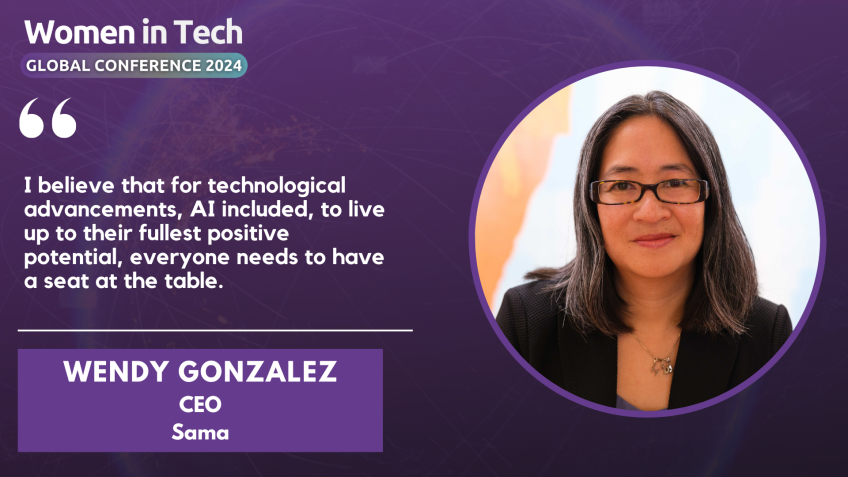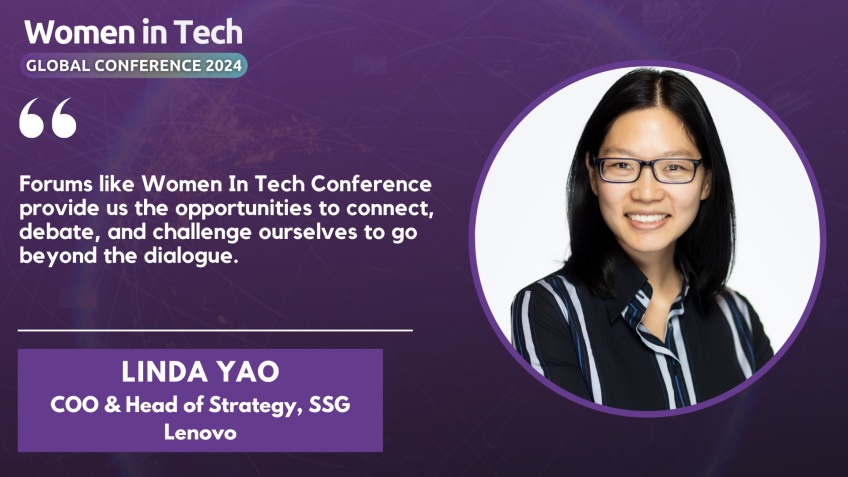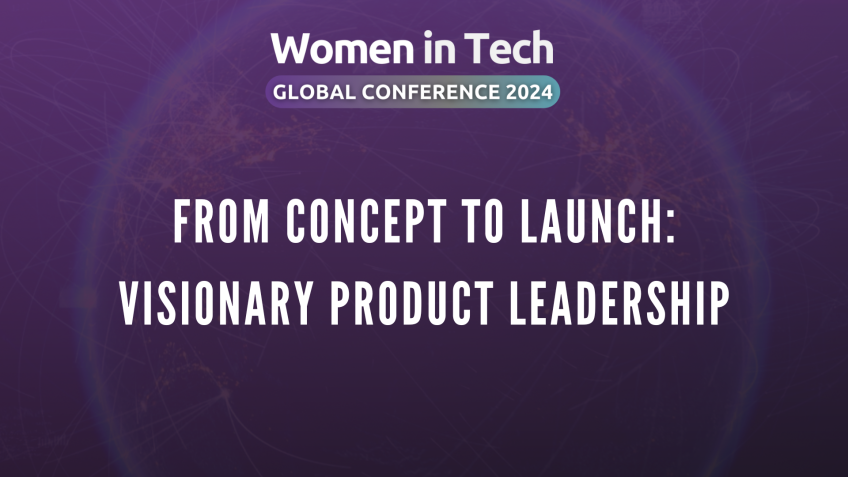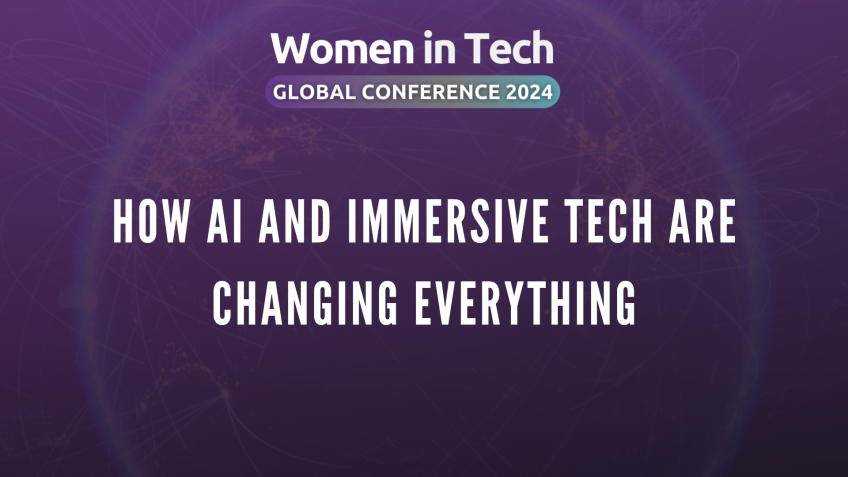Dr. Carmen Martínez - "Your Chatbot is too sexy"": Stolen Female Capital in the Era of AI
The Intriguing World of Sexy Chatbots and Female Capital in AI
Is your chatbot too sexy? Does it exploit the concept of female capital? Our discussion today will delve into that while looking into the company, Flex V, and its operations in more than 30 countries with a focus on comfortable, sustainable, and green mobility.
Biases Against Women in the Chatbot Industry
We are starting from the very beginning, understanding biases against women; their origin and how they are transferred into the tech products we create today. To facilitate this, we will introduce the theories of human capital and erotic capital. This insight helps us understand the process of appropriation of female value and the commodification of it from an empirical point of view.
What are Biases and Biases Against Women?
Biases are disproportionate weights in favor or against an idea, a group, or belief. They are learnt through our social interactions and from our exposure to media, social media, and culture in general. Sexism, a form of bias against women, makes women and girls bear a negative social framing that hinders their normal and fair development.
Female Human Capital and Biases in AI
Yes, every person has a value, called human capital. Women have human capital. There is patriarchal appropriation of our value as women, chopped off from our identity, manipulated, traded in the market primarily to men, and retrofitted into our products and services. This process has seen women in the tech industry unconsciously reinforce these biases into the artificial intelligence products they create.
Examples of Bias in Intelligent Personal Assistance
- 3D computer-generated social media influencers
- Multimodal help desk conversational agents like telecoms and customer service
- Sex robot
- Artificial reality characters
Theories of Human and Erotic Capital
To help us understand how the value has been appropriated, we look at two theories in sociology; the theory of human capital by Bordo and the theory of erotic capital by Catherine Hakim.
Bordo's theory suggests that the value we assign to individuals in society depends on four factors:
- Economic capital
- Cultural capital
- Human capital
- Social capital
The Theory of Erotic Capital
Hakim's erotic capital theory reveals that everyone possesses erotic capital i.e., a combination of visual, aesthetic, social, sexual, and physical assets. Historically, women have been expected to exploit erotic capital more. The seven components of erotic capital include beauty, sexual attractiveness, social skill in interaction, liveliness, sexual competence, social presentation, and fertility and motherhood.
Role of Women in the Tech Industry and Impact of Biases on AI Products
Women in tech play a significant role in either minimizing or reinforcing these biases. An example is in the voice industry, where research indicates a "natural and instinctive preference" for female voice, intelligent personal assistants. However, this data is biased and does not represent other sexual orientations and gender identities accurately.
Overall, to reduce gender bias, we need to stop and think about the meaning assigned to AI-powered services combined with gender, use inclusive design, and break away from the norms to create a more inclusive future.
Video Transcription
So yes. Uh your chatbot is too sexy, stolen female capital in the of I I this presentation with a little bit of a weird name before I go to the content, I just would like to review what is Flex V?Uh Flex vs is obviously the company I'm working in and uh is a mobility provider launched in Germany in 2013 that is offering uh trips by bus and train that they are comfortable sustainable and green. Uh We are operating in more than 30 countries. We have uh more than 2000 destinations and a total of more of 350,000 connections every day. And very recently we raised a G series of funding that's uh uh insanely will take into the next level of expansion myself. Yes. And I already told who I am. I'm Carin Martinez. I work as a conversational expert of flex mobility. That is one of the companies under the umbrella of uh Flex Mass. I work in the automation of the call center uh using conversational artificial intelligence and by training and a doctor of applied linguistics with an specialization in conversational analysis and ethnography of communication. Today, the agenda is basically to review to start from the beginning and to of biases against women what they are and how are they transferred to the test products that we are creating in the industry? For that.
I'm going to introduce you to the theories of human capital and erotic capital. So we can see the process of appropriation of the female a uh of the female images and the commodification of it from some empirical objective uh point of view. And at the end, I will give you some examples of bias in intelligent personal assistance and uh some uh general takeaways. This session is not uh dedicated to have uh questions I don't have the time. But right after this session, I am gonna move with Cornelia with my colleague to the boost uh of flex A. So if you have any questions just make, feel free of following me to flex bus boost after that. OK. So let's take it from the beginning. What are biases and what are biases against against women? A bias is a disproportionate weight in favor or against an idea, a group or a belief. They are close minded, they are prejudicial and they are unfair, they are innate, but in humans, they are mainly learned, they are learning through our social interactions. And from uh our exposition to media and social media and culture in general, uh sexism is a form of bias against women that translate into prejudices and discrimination and basically puts women and girls into a very negative social framing that stop their normal unfair development.
And yeah, today I uh speak, the main idea that I have to share with you is that uh every person has a value that is called uh human capital. Females have a human capital. And there is a patriarchal appropriation of our value as a female that is basically chop off from our identity, manipulated. So can be trade in the market as a community uh mainly to other men and through the presence of the products in the market and the social retrofitting and our own exposition to them, we internalize those biases. The women that are working. Actually, they unconsciously unconsciously sorry, transfer them into the artificial intelligence products or into the text products they are creating um for that I have prepared of some female found on the internet. So this is not like a systematic uh selection. This is not uh uh uh empirical uh detail analysis of current female uh agents. Uh So for agents is just artifacts that I found in the internet when I'm browsing. And this is my favorite. They are the favorite, my favorite. And they are three DD social media influencers, multimodal uh help desk, conversational agents, set robots and artificial reality characters. OK.
The first one, the 3D computer generated social media influencers, you would argue with me that they are not really uh a piece of software that they are just a picture. But uh this one, Lil Miquela that lives in Instagram has 3 million followers and she's also present in other social media like youtube and tiktok and they have also presence in real life. She has been the protagonist of a campaign in Prada uh for Prada. Among other many things of the what they call multimodal help desk, conversational agents that they are very high end technology, uh products that basically they are uh conversational agents that have also the capacity of communicating with the client with gesture and eye contact.
And they are mostly used in telecom and uh in telecoms and uh customer service. And next, we have sex robot and sex robots are uh they could be also defined like anthropomorphic sex dolls. Uh Of course, in the industry, we can find also male sex robots, but they are not so demanded that the female ones and uh well, uh at the time of purchasing them, you can customize completely their look. And in the case of this one, the most interesting thing is that actually it comes with an application that you can use to manipulate her moods and adjust her emotions on any time. And this is how she speaks my name
companion.
OK. And after we have the artificial reality characters that populate the uh gaming industry and the main characteristic is basically the dysmorphic physical appearance.
OK? Put on July. OK. So you ain't nobody playing house, it was like, oh, we got on and
ok, so if we use them to analyze the current industry trends and female software agents, uh we can ask ourselves first, what is the goal of the embodiment in the case of the, of all of them, they basically convey an image of woman uh that is sexually objectified, is focused into entertainment, emotional care for customer service or just plain sex work.
Who are the customers. In the case of the influencers, I would argue that the majority of them, they are female teenagers and young women. While in the case, especially of sex dolls and artificial reality characters of the gaming industry are men. And what image of the female do they project? While in the case of the influencers, they are sexualized, fashionista, sophisticated young girls. In the case of the help desk agents, they have all the qualities of a good customer care agent. And in the case of robots, uh they are just a sexual object with uh uh that provides uh sex as a commodity that has fully sexual disposition and has also uh emotional disengagement. So if in their case, we would be speaking about women, we would be speaking about the humanization, but they are just software agents. And so in the case of the artificial reality, they are uh uh providing uh visual entertainment. So what is happening is that the patriarchal discourse has again appropriated the female capital to, to men's desires and commodified and how can we see how the value has been appropriated? Well, there is two theories in sociology that actually helps us to uh understand the process better.
So, Bordo in the eighties uh came out with the theory of human capital in which uh uh he said that the value that we assign in society to individuals, it has basically uh four factors. Everybody has an economical capital that is the sue of assets and economic uh gains that you have in terms of uh money or properties. After everybody has cultural capital, that is the amount of knowledge you have about information that is socially valuable, like art, cinema or paraly general culture and so on. Everybody has human capital that basically translate into your education qualifications in the form of degrees or trainings and basically all the knowledge and ability that you can change in the job market for a salary. And uh people has also social capital that is the ability or not to belong to a certain network of people uh that could be translated into financial games if I think that many of you are female founders. So you are very much aware of how important it is to be in the right circle in order to uh have uh business ventures. And also the social network can help human society to uh influence, to have more influence and power.
Uh Let's put as an example, the movement of Black life matters for today. No women in that. And uh in 2010, basically a British sociologist, uh Doctor Catherine Hakim uh came out with the idea of erotic capital because she found she found that basically uh the way in which we are giving value to people in our society, it cannot be only explained by the theories of bor.
So uh she came out with the idea that everybody has also erotic capital, that is uh a combination of uh a series of assets that are visual, aesthetic, social, sexual and also physical and erotic capital is not uh it doesn't belong only to women. They belongs equally to men and to women. But historically, uh women are supposed to exploit it more. And also because in the case of women, high levels of uh erotic capital are related into better access into marriage markets. And uh therefore, uh social mobility and financial gains.
Uh There are seven components of erotic capital. The first one is beauty. Uh real beauty is uh universally valorized and very short in supply. Therefore, is very much demanded. Uh The second one is sexual attractiveness, sexual attractiveness or sex appeal. Like the classical one of uh Marilyn Monroe is basically the power of attraction that your fein or your masculinity has over other people and also permeates all your social relationships in the daily life. Real sexual attractiveness, real uh sex appeal is very short in supply and therefore, is very highly demanded. After that, we have social skill in interaction, that is the capacity and the know how of how to behave properly in all kind of social interactions. And as sub component of social skills in interaction, we have the capacity for emotional labor and the capacity of emotional labor. It has been given to women uh traditionally, in our cultures also because uh emotional care is part of motherhood, but it has been reinforced. And this is the reason because the professions that require high levels of, of emotional labor, like uh nurses or flight attendant or customer care service, they are classically uh assigned and they are fulfilled by women. OK. The rest of the component of the erotic capital, they are not so complex. We have live LINX that there are is a combination of physical energy and a good mental shape, sexual uh competence.
That is the uh combination of uh uh abilities that make you a sexually competent partner, social presentation. That is the amount of effort of money that you put you put into makeup and clothes in order to convey a certain social limits. And after that, we have fertility and motherhood. That is the capacity of procreation you have. And in the case of motherhood, the capacity that your body, your female body has to uh create a life out of itself. And this is the only part of the erotic CBI that belongs exclusively only to women. OK. So again, I go back to the original idea of the presentation that is a female, there is a female human capital that has been appropriated by a patriarchal discourse. Basically going through these components that I have presented to you through from Bordo and from Hakim and basically appropriating what is most convenient to commodified to other men. But these ideas by having these products presence in our markets and these ideas in our culture permeates everybody.
And basically women are also a part of this, of this problem. And in our daily work in our daily life, we also uh have to transfer these biases not only further inside of our society, the women that they are um active agents in the text industry, they are also reinforcing them in artificial intelligence or in general in software products.
So what I'm gonna show you is the classical example of bias in the voice industry. That is the one that I belong. And uh where people think that there is an innate somehow preference for female voices, intelligent personal assistant. So what I saw in uni is basically the transcription of a, of the interview of AD P A woman VP of a very big corporation in which she's explaining why they choose a female voice for the intelligent personal assistant they created. And she is saying that the following thing a little. So she said we actually tested a lot of voices and did a lot of research and many of the customers that were part of this test actually prefer the voice that we originally selected for the intelligent personal assistant. Of course, everything is biased from the beginning and she continues explaining the following thing. And it's also because they describe the voice as helpful, resourceful, kind and compassionate. Of course, it's an intelligent personal assistant. So it's a service provider. So therefore, we need the voice of a woman and she's actually going deeper uh explaining about those stereotypes are present in her organization. These are also some of the qualities we find in our team at the company. A lot of women have these qualities on the team. All right, I guess that they don't require it from men because they are just men. And so, of course, because it's an assistant that is providing a service and is expected to give a lot of emotional work.
She's also saying that we also wanted the intelligent personal assistant to be a personal friend, a companion, a colleague, a family member. And so we wanted to find a voice that was warm and inviting to engage with and that's how we came to select the voice. Ok. So it has to be a woman. And actually, if uh we try to do and to go to the through the same process that they went through and to try to find inside in the research, we will find that also the research is completely biased. And these two authors in 2003, they repeat the same. Of course, because customers create a perspect uh perception of natural and instinctive affection. When a woman delivers a service, service provision should be feminine. But I ask you now, what is natural and instinctive about uh humans?
I mean, like we are humans because we are not animals. It's because we have cultural standards and the society and, and standards in our society. And this second offer in 2007 basically gets into another conclusion that customers like to receive services from people from the opposite gender.
But if we go even deeper into this bias, we will not find information but people with other sexual orientations and gender identities feels about all of this. So what can we do just to stop and reflect about biases? And if I have to give you some takeaways uh from this experience of going through this uh ideas of bias and how are they transfer into artificial intelligence, especially in my field? I would say that first, if you are going to create a persona or to give a body to an artificial intelligence power product without reflecting at all, what you are going to do is to replicate and what is worth to amplify the current social biases and the dynamics of gender and power.
So it's not that we are repeating is that we are making them very much larger with the help of artificial intelligence And the next step is just to think historically, from a gender perspective, uh what is the meaning that we are assigning to that uh service in combination with the gender?
Are we align with them? And are we align with them, especially as women in that? And so the last step would be to use inclusive design as a weapon to neutralize the biases basically by breaking the canon doing the opposite, what they were expecting you to do if you have the uh uh enough arguments to proceed like that. And also you can provide enough variety for interaction styles. But I think that at the current state of the industry and this uh current state of alignment of such problems for women in that, I think that what we have to do is to stop and think first and about everything and be an inclusive future. So thank you very much.





